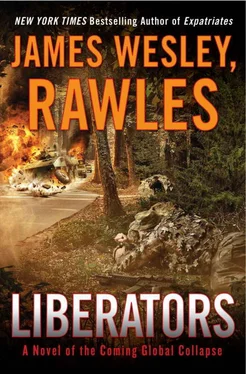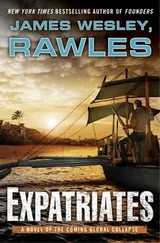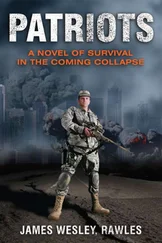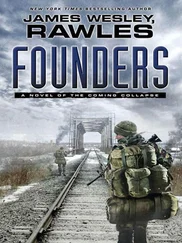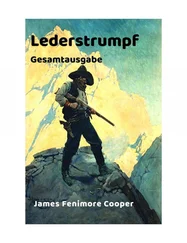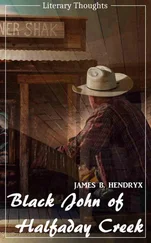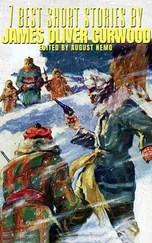• • •
The NLR got its start with aboriginal and mixed blood ( métis ) people in Quebec, but it soon spread throughout Canada by word of mouth. Since it was a leaderless movement, it was impossible for UNPROFOR and the Canadian puppet government to stop. Aside from some motivational and general guidance documents that were widely distributed nationwide, the NLR leadership exerted no control of local resistance groups and had no communication with them. In effect, NLR was a philosophical leadership for the resistance cells, rather than a command structure.
While the NLR’s detached relationship and leaderless cells made it extremely difficult for UNPROFOR to penetrate the resistance, their lack of centralized control also became a weakness when resistance units occasionally showed poor judgment in picking individual targets, or failed to exercise fire discipline and caused collateral damage. Such acts tarnished the image of the entire resistance movement. On several occasions the occupational government was caught attempting to pin blame on resistance groups for massacres that they themselves had committed.
There was a huge variety of resistance cell structures and methodologies. This added to their unpredictability, which made locating and eliminating them difficult. The majority of the cells were dedicated to sabotage. Others had traditional infantry squad or even platoon structure, and could handle multiple tasks, including sabotage, demolition, raids, and ambushes. Some of the most successful Canadian resistance cells patterned their field organization on the USMC’s Scout Sniper Team organizational concept. The teams ranged from four to six individuals. Unlike the Marines, they typically used two scoped bolt-action rifles instead of a machine gun and a sniper rifle. The heavy weapons carried by their two-man security elements varied widely, depending on the weapons that they were able to scavenge on the battlefield. The fifth man was usually a radio operator/rifleman, and the sixth man filled a variety of roles, ranging from RPV controller to demolitions man.
One of the first engagements between the NLR and UNPROFOR dismounted infantry was near Indian Head, Saskatchewan. The shooting started when six NLR fighters armed with scoped deer rifles engaged two squads of French infantry armed with FAMAS bullpups, across an open field. The resistance wisely opened fire at 570 yards. The French returned fire, but their 5.56 rifles lacked sufficient accuracy at that range. Instead of calling for fire support or a gunship, the French patrol leader attempted to outfire and outmaneuver their enemy. The end result was fourteen dead for UNPROFOR, and fourteen captured weapons. The NLR lost only one man in the extended firefight. This incident illustrated the mismatch in small arms. In essence the occupiers had three-hundred-yard-capable rifles, while the resistance had six-hundred-yard (or longer) range rifles.
In recent years, the preferred “budget” elk and caribou rifle in western Canada had been the Remington Model 770, chambered in .300 Winchester Magnum, with a twenty-four-inch barrel. These rifles could be found new, and factory-equipped with a 3–9x40 variable scope for less than $375, or less than $500 in the more weather-resistant stainless steel variant with camouflage stock. The scopes were already bore-sighted at the factory. One of these rifles, along with a few spare four-round detachable magazines was, effectively an “off the shelf” sniper rifle capable of six-hundred-plus-yard shots on man-size targets.
A significant part of the resistance war was a war of words. Individual NLR cells produced and distributed pamphlets on sabotage and resistance warfare. Among the most popular were a digest of the book Total Resistance by von Dach, and reprints of the OSS Simple Sabotage Field Manual , which had been declassified in 2008.
Through its publications, NLR also sought aid from sympathizers in Canada and the United States. Its most urgent needs were electric blasting caps, detonating cord (also known as det cord or Primacord), and rifle ammunition. Some of its specific requests for ammunition seemed odd or antiquated to residents of the United States, but these cartridges were still used regularly in Canada: .303 British, .300 Savage, .250-3000 Savage, .303 Savage, and .280 Ross.
31
STEEL SHIPS AND IRON MEN
Military analysts pretty much agree Japan lost the war in the Pacific because they were playing chess while we were playing checkers. Overthinking all but guarantees failure. Engineers will tell you complexity increases as the square of the subsystems involved, or near enough, something survivalists should keep in mind when they attempt to replicate their ‘normal’ life. And no, being a nice, deserving person with good intentions won’t make failure modes go away.
—Ol’ Remus,
The Woodpile Report
Vancouver, British Columbia—July, the Third Year
On July 7, the Kingsway resistance cell received an intelligence report that was marked “SAM Sensitive.” These messages had sources and methods (SAMs) that if revealed could do great harm, for example, endangering the life of a confidential informant.
Their informant’s report gave them details on the upcoming arrival of two French cargo ships operated by La Compagnie Maritime Nantaise (MN). The MN Toucan and MN Colibri were sister ships, with a gross weight of more than nineteen hundred tons each. These were commercial roll-on-roll-off (RO-RO) vessels, specifically designed for transporting vehicles. The ships had loaded at the HAROPA terminal at Le Havre fifteen weeks earlier and had transited the Panama Canal. They were both laden with a mixed cargo of twenty-five-ton véhicule blindé de combat d’infanterie (VBCI) wheeled APCs, fourteen-ton véhicule de l’avant blindé (VAVB or armored vanguard vehicle), and an assortment of military cargo trucks and Renault Sherpa 2 utility vehicles—the French equivalent of the U.S. military Humvee. Based on the recent experience of the resistance in Canada’s eastern provinces, the VBCI “armored vehicle for infantry combat” was considered a key threat.
The two ships were standing in 170 feet of water in the Burke Channel, just a few miles from the port of Bella Coola. This inlet had been glacially carved during the Ice Age. Much like the fjords of Norway, Bella Coola Bay was surprisingly deep. Only the magnitude of its daily tides and its rough outer waters kept it from becoming a more significant seaport.
The ships were not yet anchored; their automatic station-keeping thrusters slaved to their GPS were holding within a few meters of their plotted location. The docking and unloading were scheduled for just after the regular midcoast BC ferry departed the ferry terminal at 9:45 P.M. The unloading was expected to take two full days.
Originally destined for Vancouver, the two ships had been diverted to Bella Coola when threat analysts from the French Directorate of Military Intelligence ( Direction du Renseignement Militaire or DRM) decided that Port Metro Vancouver was too vulnerable to a mortar attack by demobilized Canadian Defense Force soldiers. Bella Coola, they reasoned, was a “safe backwater port.”
The royal-blue-and-white-painted ships both had the enormous letters “MN” painted in white on their blue sides, so they were hard to miss. The ships were in good mechanical repair but were heavily streaked with rust.
As the town’s small fishing fleet (now down to just four boats) motored out for the evening, the captain of one of the boats was careful to position his boat at the south side of the flotilla. Inside his boat, four divers were suited up and checking their gear. They crawled onto the boat’s aft working deck, concealed by a stack of crab pots. A quarter mile before the boat came alongside the two French ships, the divers—now wearing dry suits—quickly slipped into the water.
Читать дальше
